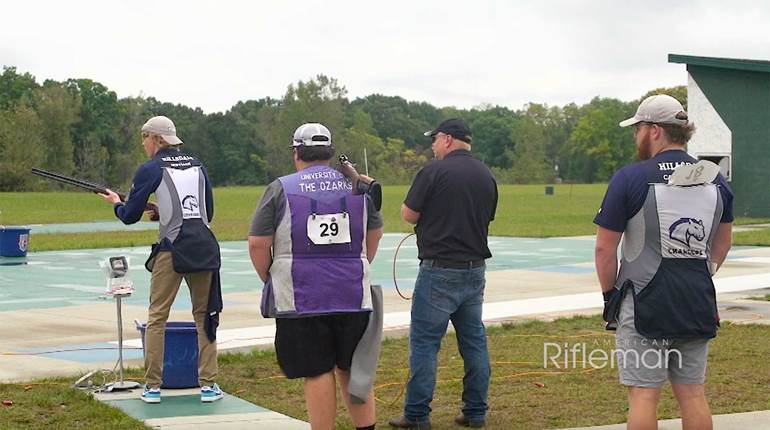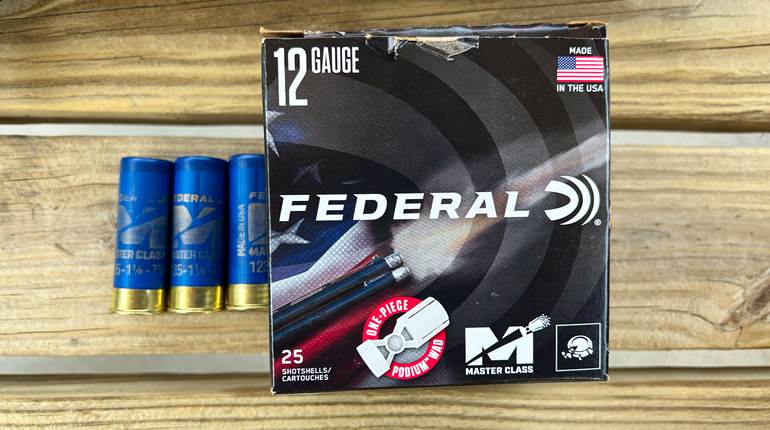
Perhaps the best way to begin an article on an Italian ammunition maker is to tell those who don’t know how to pronounce its name: Fiocchi is pronounced “fee-o-kee.” But, then again, many shooters already know this, as Fiocchi has been making ammunition in the U.S. now for nearly 40 years.
After more than a century of ammunition production in Europe—the company was founded in Lecco, Italy, in 1876 by Giulio Fiocchi—the company’s U.S. arm purchased the site of an old dairy farm in 1983 in Ozark, Mo., for its American ammunition factory. Fiocchi had already been importing ammunition into America since the 1950s, but this manufacturing facility gave it an American presence along with a team to develop and introduce its products.
 Fiocchi has since continued to grow and expand as its investment in America has found loyal customers. Currently, the company employs nearly 200 Americans producing shotshell and centerfire ammunition. Today, about 80 percent of Fiocchi’s products sold on the U.S. market are loaded in Ozark or in Fiocchi’s new facility near Little Rock, Ark. The company also recently announced that it will spend $41.5 million to develop a 281-acre site in the Port of Little Rock for a primer-manufacturing plant that will employ 120 American workers. In addition, the lion’s share of Italian ammunition production comes to the United States. Fiocchi certainly appears to recognize the tremendous potential available in the American market.
Fiocchi has since continued to grow and expand as its investment in America has found loyal customers. Currently, the company employs nearly 200 Americans producing shotshell and centerfire ammunition. Today, about 80 percent of Fiocchi’s products sold on the U.S. market are loaded in Ozark or in Fiocchi’s new facility near Little Rock, Ark. The company also recently announced that it will spend $41.5 million to develop a 281-acre site in the Port of Little Rock for a primer-manufacturing plant that will employ 120 American workers. In addition, the lion’s share of Italian ammunition production comes to the United States. Fiocchi certainly appears to recognize the tremendous potential available in the American market.
As many lovers of obscure cartridges have learned while searching for ammunition, Fiocchi has a long history of manufacturing centerfire ammunition. You see, Fiocchi is not so big that it doesn’t have time to stop a production line to load uncommon cartridges. It is one of very few companies making hard-to-find pistol rounds such as .455 Webley, .30 Luger, 8 mm Gasser and 9 mm Steyr. Another little-known area of its business is that Fiocchi produces Olympic-grade .22 Long Rifle loads that are used by biathletes around the world.
What has helped bring Fiocchi more name recognition lately is that, as gun owners know all too well, the American ammunition business has, over the last decade, gone through something akin to the five stages of grief—denial, anger, bargaining, depression and acceptance.
Ammunition shortages due to increased demand from a massively growing market and consumer base that—thanks, in part, to NRA’s leading the way to get lawmakers to change laws that then made the boom possible—did initially result in a form of denial from major ammo makers, as in denying the conspiracy theory that the then-Obama administration was buying up all the ammunition to keep it from American consumers. The truth was that manufacturers were simply overwhelmed—and the major ones are still all working three shifts around the clock to meet demand.
The next stage, anger, then came from gun owners who just wanted to shoot. Who can blame them? Bargaining then reached epic levels across the marketplace. There was soon a good deal of depression and finally acceptance. But the story doesn’t end there. The need for more quality ammunition in the American marketplace resulted in expansion from large and small makers alike.
If you’re wondering why this response from ammunition companies to invest and grow to satisfy so many consumers has taken so long, the answer is that it takes years and a positive, if bold, outlook on the future for manufacturers to ramp up production of products like ammunition. Plants must be expanded or built. Supply lines must be devised by engineers. People must be hired and trained to make quality products. More materials must be obtained from a competitive marketplace.
So okay, that’s the general landscape of the market, but Fiocchi isn’t exactly like the other players. The company isn’t yet a dominant force, but it isn’t a boutique manufacturer either. It is after market share, sure, but Fiocchi hasn’t bought into the myth that market share alone is the goal, and it knows that overzealously chasing growth can lead to unsteady ground, as the big-box stores can demand a fidelity that can force manufacturers to sideline smaller players in the market. Thus committed, a manufacturer of ammunition, kid’s shoes or big-screen televisions can find its profit margins tightening and its eggs increasingly in one basket until they either take the risk of spending big to expand further or they begin to lose accounts they can’t service.

This shouldn’t be taken to mean that the ammunition makers in the big-box stores shouldn’t be there—rather, it is that it can be financially perilous for a smaller player to make the big leap to compete in such a market. The point is that growing for the sake of growing is not a simple thing or even always a good goal. Finding a niche (or niches) and staying true to quality, as well as consumers who are already loyal, is smarter in the long term.
Another danger in growing quickly is that upping production, if a team isn’t very diligent, can also impact the quality of a product, which could then deteriorate the company’s reputation. This would thus harm its long-term prospects.
“While we continue to grow, we remain true to both our Italian and American heritage and lineage and will continue to focus on quality craftsmanship, innovation and unequaled customer service for many years to come,” said Anthony Acitelli, president and CEO of Fiocchi of America. “We have a unique story to tell, and products with earned reputations for quality—clean powders, lead-free primers and more—if we have a fault, it has been not telling the Fiocchi story enough in America.”
Fiocchi’s American Story
We’re talking about Fiocchi because it’s a company worth knowing in the important, robust and competitive business of ammunition. But if you’re reading this and are wondering where you can even find Fiocchi, then you probably live and buy your ammunition in the portions of the country, or from the stores, that haven’t yet discovered this company’s shotgun, rifle and pistol ammunition.
 Fiocchi actually inhabits a good and growing niche. As previously noted, it is hardly a boutique ammo maker, as it currently has about 4 percent of the total U.S. market, but it’s also not one of the big guys. Instead, Fiocchi focuses on selling a quality product in smaller retail outlets and at clubs. The company is also focused on wholesale distribution, buy groups (independent stores and ranges) and some select key regional retailers (Scheels, Turners and others). Because of this strategy, it simply doesn’t get the visibility it might receive in a Cabela’s, Bass Pro Shops or Academy. To help consumers find its products, Fiocchi does have a dealer locator on its website (fiocchiusa.com/retail-locator.html).
Fiocchi actually inhabits a good and growing niche. As previously noted, it is hardly a boutique ammo maker, as it currently has about 4 percent of the total U.S. market, but it’s also not one of the big guys. Instead, Fiocchi focuses on selling a quality product in smaller retail outlets and at clubs. The company is also focused on wholesale distribution, buy groups (independent stores and ranges) and some select key regional retailers (Scheels, Turners and others). Because of this strategy, it simply doesn’t get the visibility it might receive in a Cabela’s, Bass Pro Shops or Academy. To help consumers find its products, Fiocchi does have a dealer locator on its website (fiocchiusa.com/retail-locator.html).
If you already know about Fiocchi, then you’ve probably seen its shotgun ammunition, as many people are not even aware that Fiocchi makes centerfire rifle and pistol ammunition. Fiocchi conducted a brand-awareness survey at the end of 2021 and found that while 8 percent of gun owners had at least heard of Fiocchi’s shotshells, only 1 percent or less knew about its rifle and pistol ammo.
Now, perhaps it is not politically careful to note, but to find its niches in the American marketplace, Fiocchi made an important decision some foreign manufacturers have a difficult time understanding. The company decided to hire an experienced American team headed by Acitelli. The importance of this can’t be overstated. Nevertheless, it is surprising how many executives at overseas companies decide that Europeans or South Americans can discern what should be on shelves in Alabama, Montana and Maine.
Fiocchi never made this mistake; as previously noted, the company actually built a plant where a dairy farm once stood in Arkansas in the 1980s—now that’s getting it. And it is responding to America’s growth in gun ownership and the shooting sports by further investing in making ammunition in America.
But the point is, even if a lot of gun owners haven’t heard of the company, Fiocchi has a long and storied reputation. The company initially started in the business manufacturing high-quality gunpowder and later began loading ammunition. Today, it is fully vertically integrated (for its core offerings), which means that it makes its own powder, primers, brass, shotshell, wads and projectiles. With that, its two biggest claims to fame are perhaps its excellent powders and its proprietary, lead-free primers.

Its current American product slate is broad—ranging from rimfire to centerfire pistol and rifle and, of course, shotshell. Rimfire lines feature: Range Dynamics and Field Dynamics with loads in both .22 Long Rifle and .22 WMR. Centerfire pistol lines feature: Hyperformance Defense, Defense Dynamics, Range Dynamics, Heritage and Cowboy Action. Loads range from .25 ACP to .45 ACP. Centerfire rifle lines feature: Hyperformance Hunt, Hyperformance Match, Field Dynamics, Range Dynamics, Defense Dynamics and Cowboy Action. Loads range from .220 Swift to .375 Rem. Ultra Mag. Shotshell lines feature: Golden Series, Flyway Series, Field Dynamics, Exacta Line, International Clays, Shooting Dynamics, Defense Dynamics and Jerry Miculek 3 Gun. Loads include .410-bore and 32 through 12 gauges.
As for its price points, Fiocchi’s ammunition is typically priced at a slight premium—though it also supplies competitive offerings in the high-volume categories. The company sees itself as being similar in brand perception to a Filson or an Orvis—attracting customers who look for quality and are willing to spend a little extra on it.
Fiocchi is also certainly known, especially by those who frequent indoor ranges, for having some of the cleanest-burning powders out there. Its lead-free primers also give it a clean reputation. Fiocchi boasts that the company gets the same or better levels of performance from its primers by using a no-lead styphnate—this, again, is a big deal for anyone who shoots on indoor ranges. Fiocchi is also transitioning most of its centerfire rifle ammunition to lead-free primers (or, as the Fiocchi team refers to them internally, ZP primers).
Like many manufacturers, its biggest issue at the moment is getting enough primers. The opening of its new primer manufacturing location in Little Rock, Ark., will help (as previously noted, land has already been purchased).
So, now, when you see Fiocchi boxes on the shelf, look closer. It was likely made or loaded in Arkansas. And, with a rich Italian heritage in ammunition making backing it up, it has a hard-earned reputation for quality and consistency—and that’s a combination we can always use more of on our gun store shelves.





































